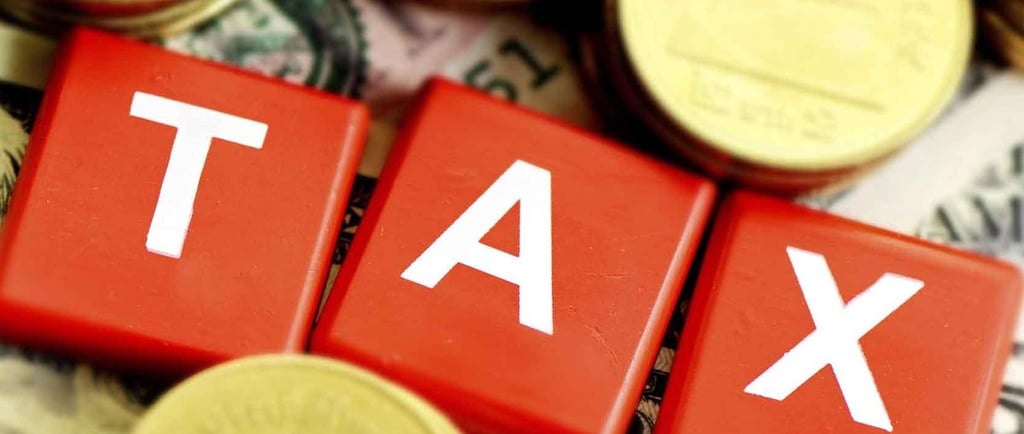new clients - Students/seniors $35 - Corp tax filing starts $800 - install app
RRSP for Self-Employed Individuals: A Smart Way to Save on Taxes in Canada
RRSP for self-employed in Canada offers a smart way to reduce taxes and grow your retirement savings. Discover how to maximize your RRSP benefits as a self-employed individual.
7/12/20252 min read


If you're a freelancer, small business owner, contractor, or have irregular income — managing your finances and taxes each year can be a serious challenge. The good news is: you can legally reduce your tax burden using a powerful tool called the RRSP (Registered Retirement Savings Plan).
Many people think RRSPs are only for salaried employees, but in reality, self-employed individuals can benefit even more by using RRSPs flexibly and strategically.
1. What Is an RRSP and Why Should the Self-Employed Care?
An RRSP is a government-registered retirement savings account that allows you to:
Contribute income before taxes
Defer taxes until withdrawal (usually at retirement, when your tax rate is lower)
Invest in mutual funds, ETFs, GICs, stocks, and more
For self-employed individuals, RRSPs serve as:
A legal tax-saving strategy
A way to protect income from unplanned personal spending
A secure long-term asset for retirement
2. Key Benefits of RRSP for the Self-Employed
✅ Contributions reduce your taxable income
Any contributions to your RRSP can be deducted from your business income. This helps:
Lower your tax bill for the year
Keep more money available for reinvestment or saving
Example: If you earn $80,000/year and contribute $15,000 to your RRSP, you’ll only be taxed on $65,000.
✅ Tax deferral until retirement
You don’t pay taxes when contributing. You only pay taxes when you withdraw funds — typically after age 60, when your income (and tax rate) is likely lower.
✅ Spousal RRSP for income splitting
You can open a Spousal RRSP to:
Reduce taxes for both you and your spouse
Maximize retirement income for the couple
Avoid having one partner taxed in a higher bracket
3. RRSP vs TFSA – Which Is Better for Self-Employed People?
RRSP offers immediate tax savings because contributions reduce your taxable income. It’s ideal if you’re currently in a high-income bracket. However, withdrawals are taxed unless done during retirement. For 2024, the RRSP annual limit is 18% of last year’s income, up to $31,560.
TFSA doesn’t reduce taxes upfront, but all investment earnings and withdrawals are completely tax-free, and you can withdraw funds at any time with no penalty. The 2024 TFSA limit is $7,000.
Best strategy: Use both RRSP and TFSA. Prioritize RRSP if your income is high, to get immediate tax savings.
4. How to Set Up an RRSP If You're Self-Employed
Determine your net income from the previous year
Check your RRSP contribution room (available on your CRA MyAccount)
Open an RRSP account through a bank or financial advisor
Choose the right investments (GICs, mutual funds, ETFs, etc.)
Create a contribution plan — either monthly or around tax season
📌 Important Notes:
Unused contribution room can carry forward to future years
Early withdrawals from RRSPs are taxed and may reduce long-term benefits
The earlier you contribute, the more you benefit from compound interest
✅ How TikiTax Can Help
As a self-employed person, you don’t have an HR or finance team — let TikiTax guide you:
Choose the best RRSP plan for your business and income
Open your RRSP account and create a personalized contribution plan
Maximize tax efficiency so you can focus on growing your business
📞 Talk to a TikiTax advisor today
👉 Book your free consultation atTikiTax.net
👉 Avoid costly mistakes — and save thousands every year
Services
Personalized tax preparation and consulting for all.
Location:
Support
email: info@tikitax.com
Phone:(+1).236.788.7799
© 2024. All rights reserved.
2339 HW 97, Kelowna, BC, Canada
145 Chadwick Ct Suite 220, North Vancouver, BC V7M 3K1
